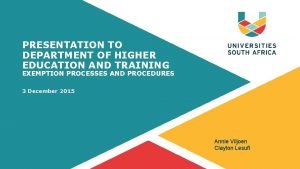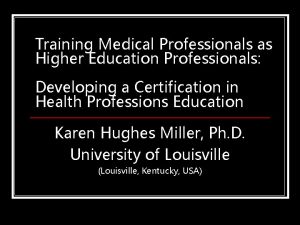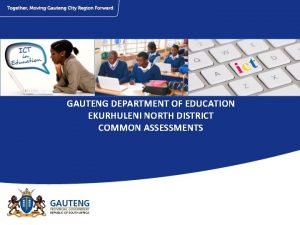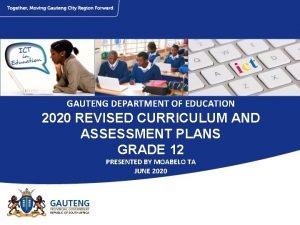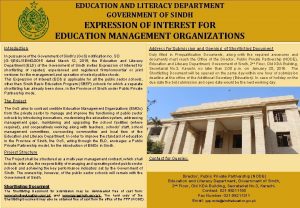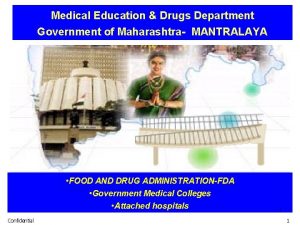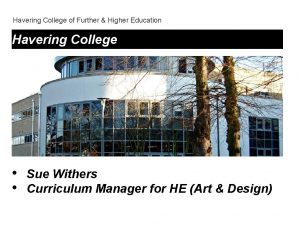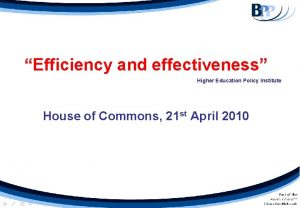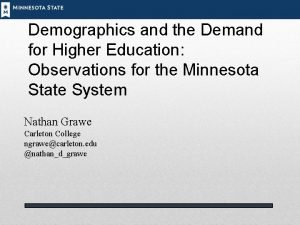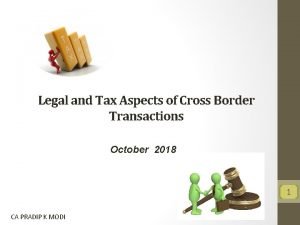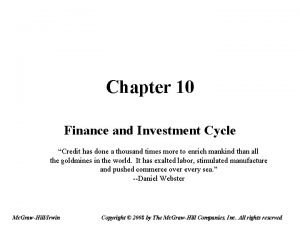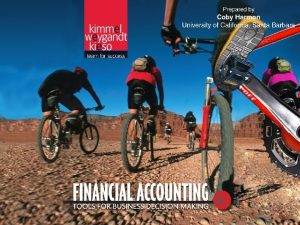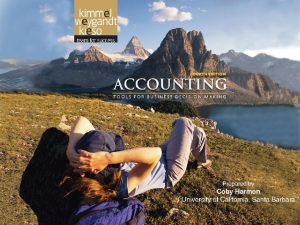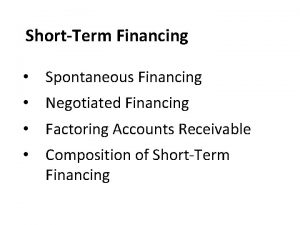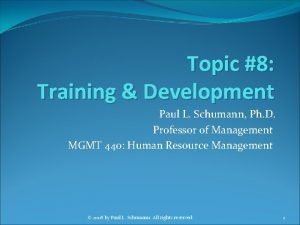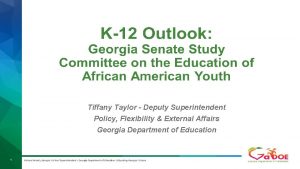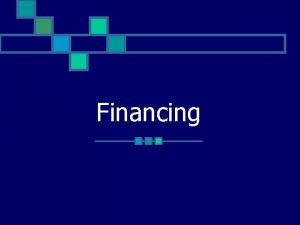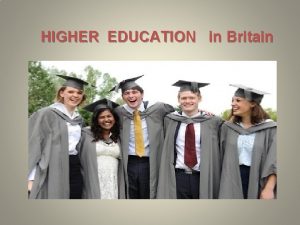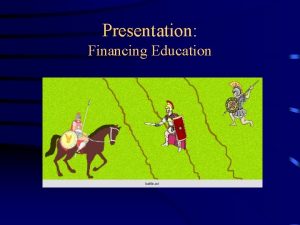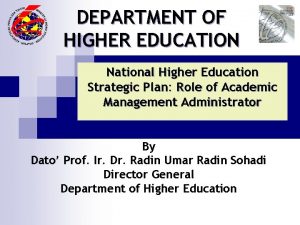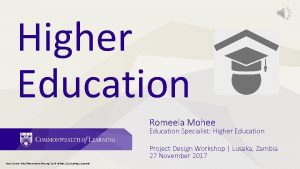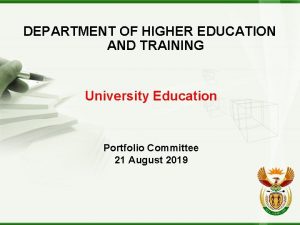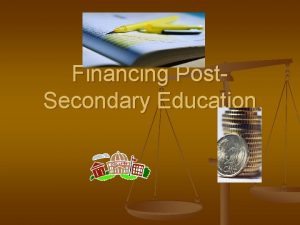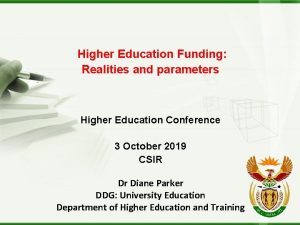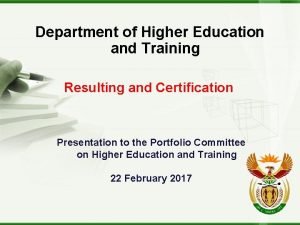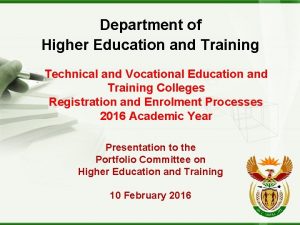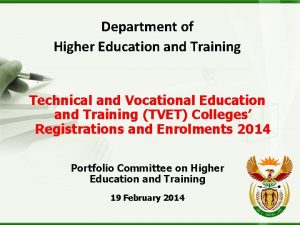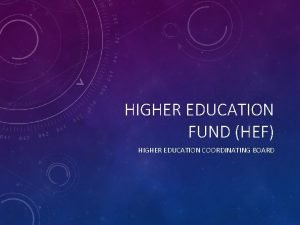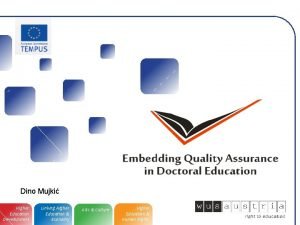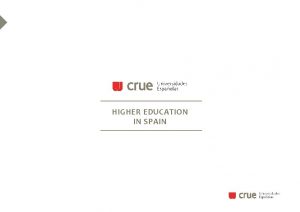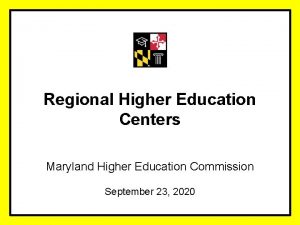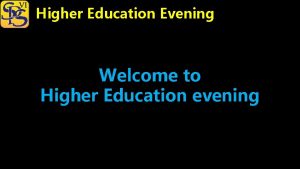Department of Higher Education and Training Financing Higher
























- Slides: 24

Department of Higher Education and Training Financing Higher Education in South Africa World Bank Seminar on Higher Education Financing 26 February 2018 Wits Club

The Right to Education Section 29 of the Constitution: (1) Everyone has a right – (a) to a basic education, including adult basic education, and (b) further education, which the state, through reasonable measures, must make progressively available and accessible. • basic education (adult basic education) - a fundamental right • further education (HE and TVET) - a secondary right to be made available and accessible to those who merit it • Make available = provide sufficient spaces for study • Make it accessible = affordable; no academically deserving individual should be denied access on the basis of financial need 15

Funding Higher Education Institutions and Students • WP 3: A Programme for the Transformation of Higher Education recognised HE as both a public and a private good: – Investment in higher education important for economic development of the country; – but knowledge and skills acquired from achieving a university qualification result in significant lifetime private benefits for successful students • WP 3 principle: costs for HE should be shared between public and private beneficiaries – BUT finances should not prohibit academically deserving students from accessing HE 21

Three streams of income to finance public HE • Costs of higher education shared between public and private interests – the state in the form of subsidies – the private sector, through investments in research, scholarships etc. and – families themselves, whose children will have access to the private goods of productive engagement in the economy by virtue of their access to higher education • Three funding streams: – First stream (direct subsidies from DHET) – Second stream (student fees) – Third stream (funding from donors/ research funding/ other income from investments, beneficiation of intellectual property etc, including from government departments other than the DHET) 4

Funding Higher Education Institutions and Students • White Paper on Post School Education and Training: affirmed the cost sharing model for HE • Committed government to strengthen the National Student Financial Aid Scheme (NSFAS) and fully fund poor and working class students to access and succeed in HE • Committed government to find a solution for funding so called “missing middle” students • The WP on PSET is in line with the NDP which indicated that by 2030 all students qualifying for NSFAS must be provided access FCS funding (loans and/ bursaries); students who do not qualify for NSFAS should have access to bank loans, backed by state sureties; and, both the NSFAS and bank loans should be recovered through arrangements with the South African Revenue Service. 21

Funding public Higher Education • First stream Income is distributed through a performance based funding framework to public higher education institutions • Three steering mechanisms: planning, funding and quality assurance • Planning based on enrolments (headcounts/ FTEs); infrastructure planning; planning for development • Subsidies distributed in the form of a block grant and earmarked grants 21

Funding Higher Education (2018/19) Teaching input grant Block Grant (discretionary) 75% of budget Earmarked grants (steer transformation) 25% of budget University Capacity Development New Universities Grant Infrastructure and Efficiency SMU operational grant Teaching output grant Research output grant Institutional Factor Foundation Provisioning Veterinary Sciences Grant HDI Development Grant Clinical Training Grant 22

Other Higher Education Funding Other Earmarked Grants NSFAS NIHSS AIMS Sector planning, monitoring, evaluation and support programme (oversight) Council on Higher Education 22

Funding Public Universities Comparison of university income sources 2000 and 2014 Higher Education Income Sources (ZAR Billion) 100% 90% 80% 70% 60% 50% Third Stream R 8. 78 (27%) Third Stream R 17 (28. 6%) Second stream: Fees R 7. 80 (24%) Second stream: Fees R 19. 6 (32. 9%) First stream: Government R 15. 93 (49%) First stream: Government R 22. 9 (38. 4%) 2000 2014 40% 30% 20% 10% 0% Source: Data collected from University Annual Reports (2000 and 2014) and DHET financial analysis reports 9

Funding Public Universities • Block grant allocation to universities increased by 139. 7% between 2004/05 and 2015/16 in nominal terms BUT eroding effect of inflation (at CPI) = 29. 8% growth in real terms • student enrolment growth over the period = a net decrease in the per capita Full Time Equivalent (FTE) student allocation of - 3. 4% • If HEPI (CPI +2%), then the 139. 7% nominal increase in the block grant from 2004/05 to 2015/16, translates into 5. 6% in real terms, and a net decrease in the per capita FTE student allocation of - 21. 4% 10

Reliance of Universities on Fees for their Income 11

Tuition Fee Levels Differentiated Across the System Source: Data provided to the DHET by universities and signed off by their VCs, October 2015 12

Full Cost of Study Differentiated Across the System Source: Data provided to the DHET by universities and signed off by their VCs, October 2015 13

Student Debt Line item Student debt before provision for doubtful debt Provision for doubtful debt Net student debt 2016 2015 2014 R’ 000 8 378 243 7 037 451 6 188 464 -5 068 728 -3 890 986 -3 504 3 309 516 3 146 465 2 684 960 22 302 356 22 224 385 19 428 315 37. 6% 31. 7% 31. 9% 14. 8% 14. 2% 13. 8% Student debt ratio: Tuition and accommodation fees Student debt as a percentage of tuition and accommodation fees (before impairment) Student debt as a percentage of tuition and accommodation fees (after impairment) 14

15

16

Providing Student Financial Aid • Government, through NSFAS, had been progressively implementing ‘fee-free higher education for the poor’ (up until 2017): – a student entering university is provided with an interest free loan to cover their tuition (and potentially) FCS while studying. – interest kicks in one year after successful completion – The interest is significantly below the commercial lending rate. – 60% of the loan is converted into a grant for students completing in minimum time. – If the student never benefits from the goods of university education, i. e. they never find productive employment and remain poor, they never pay back their loan and in effect receive their entire university education free (paid for tax payers) • BUT only available for the ‘poor’ – other financially needy excluded • Insufficient funds to cover FCS for all who qualify 17

Heher Commission on HET • Established by the President to look at the feasibility of providing free higher education and training in Jan 2016 • Reported in August 2017 confirming the cost sharing model for hunger education and recommending, amongst a range of other things, a universal income contingent loan scheme for students to access university education • Government remained committed to providing free higher education for the poor and working classes, did not accept the ICL scheme suggested by the commission and announced ‘fully subsidised free higher education for poor and working class students” to be introduced over a 5 year period from 2018 academic year (estimated at 40% of students in HE) • Also to increase baseline subsidy funding to HE institutions form 0. 68% of GDP to 1% of GDP over 5 years. 18

Funding support for student fees • Free full cost of study for students from families with household incomes up to R 350 000 per annum (poor and working class) = actual cost of tuition + learning support materials (agreed minimum package) + subsidised accommodation/ transport • Ministerial Committee on “funding poor and missing middle students” – Pilot of a new funding model including grants and income contingent loans though a PPP 19

Setting fees for Public Universities • A regulatory framework for setting fees in higher education to be developed to ensure affordable fees and sustainable institutions ( built on advice received form the CHE); implies a change from individual institutions setting fees in line with own requirements 20

Funding Public Universities 21

Throughput rate in undergraduate programmes (contact: after year 6; distance: after year 10)

Affordable HE for All and sustainability of public HEIs • Improved government funding (block grant) to the university system to enable growth and keep fees in check (to 1% of GDP by 2022/23) • Universities must become more efficient in utilising the funding in the system including finding mechanisms to improve partnerships and sharing resources across the system, improve internal efficiencies in operations, improve student success; ensure less wastage • New technologies, data analytics and student advisory services • 0 pen learning; distance and blended learning (BUT pedagogy to ensure success) • Central Applications Service (one stop shop – better placement and career advice) • Improved private sector investment (in student bursaries especially for PG students, research & innovation) • Student financial aid extended to include all who need it (grants and loans); • a regulatory framework for setting fees for higher education 23

Thank You
 Department of higher education and training
Department of higher education and training Ohio department of higher education
Ohio department of higher education Training for higher education professionals
Training for higher education professionals Financing education in a climate of change
Financing education in a climate of change Department of labor and training
Department of labor and training Oklahoma alternative placement program
Oklahoma alternative placement program School education and literacy department
School education and literacy department 10 pillars of gauteng department of education
10 pillars of gauteng department of education Gde vision and mission 2021
Gde vision and mission 2021 Principal certification oklahoma
Principal certification oklahoma Education and literacy department
Education and literacy department Medical education and drugs department
Medical education and drugs department Havering college of further and higher education
Havering college of further and higher education Efficiency and effectiveness in higher education
Efficiency and effectiveness in higher education Demographics and the demand for higher education
Demographics and the demand for higher education Philippe van thiel
Philippe van thiel Pros and cons of risk financing
Pros and cons of risk financing Financing and investing cycle
Financing and investing cycle Cash flow statement indirect method
Cash flow statement indirect method Operating activities
Operating activities Spontaneous financing meaning
Spontaneous financing meaning Corporate financing and investment decisions
Corporate financing and investment decisions Training plan for accounting department
Training plan for accounting department Tiffany taylor georgia department of education
Tiffany taylor georgia department of education Amy williamson iowa department of education
Amy williamson iowa department of education
